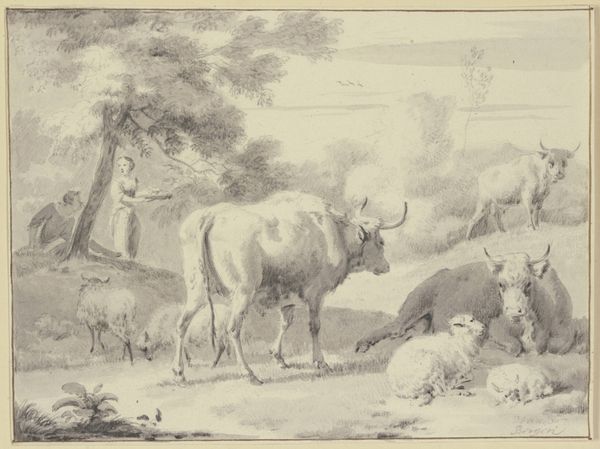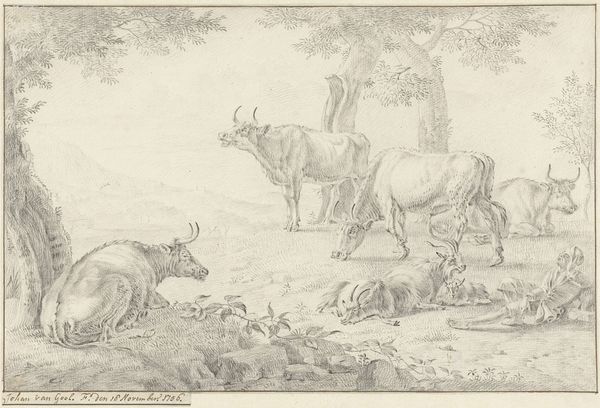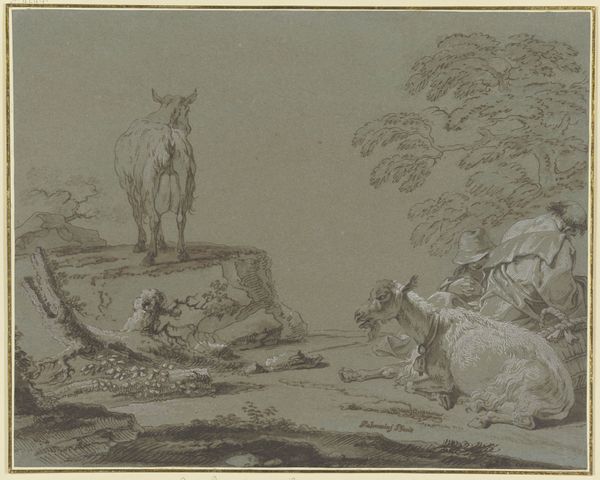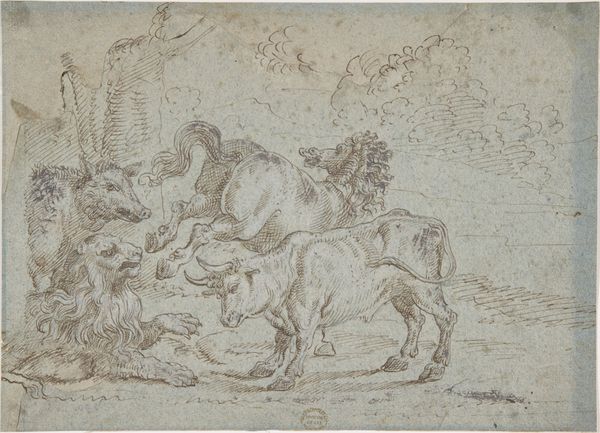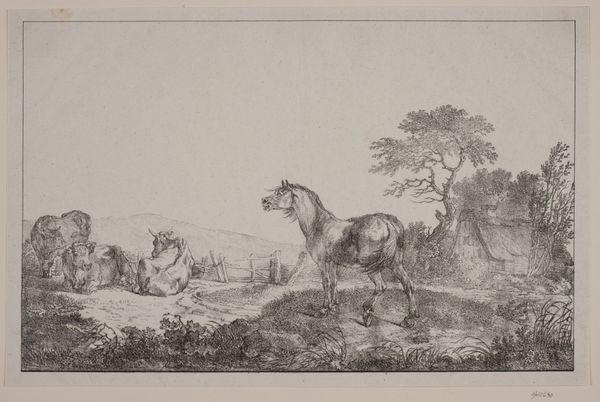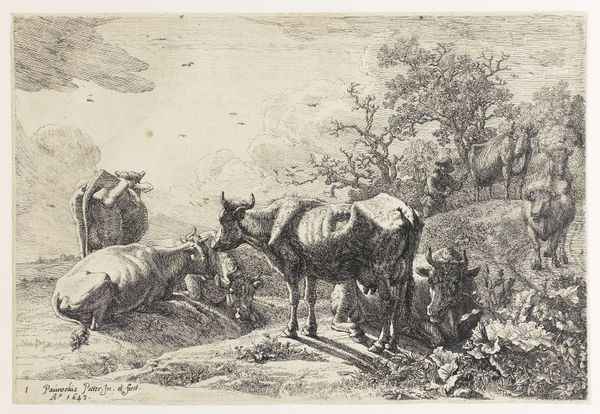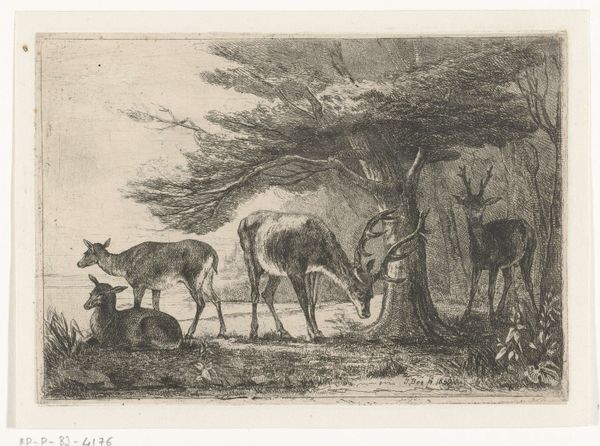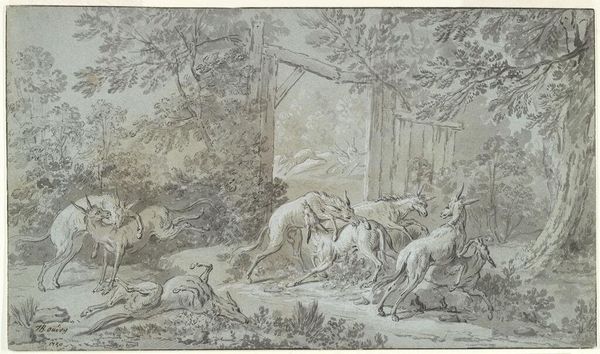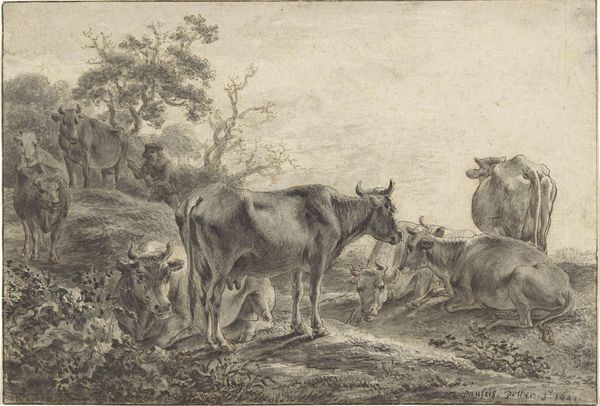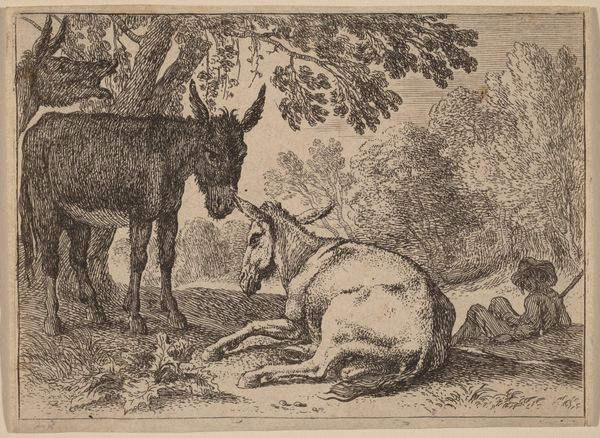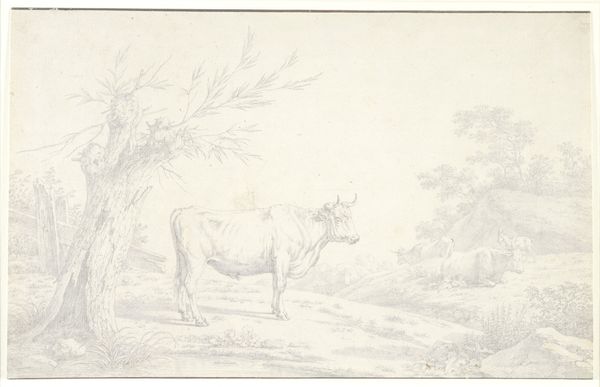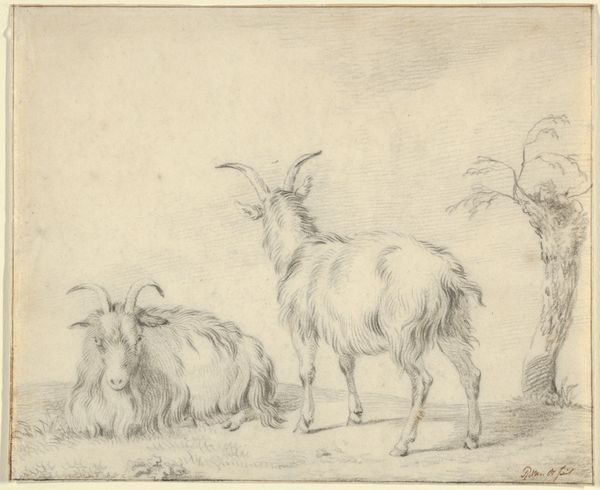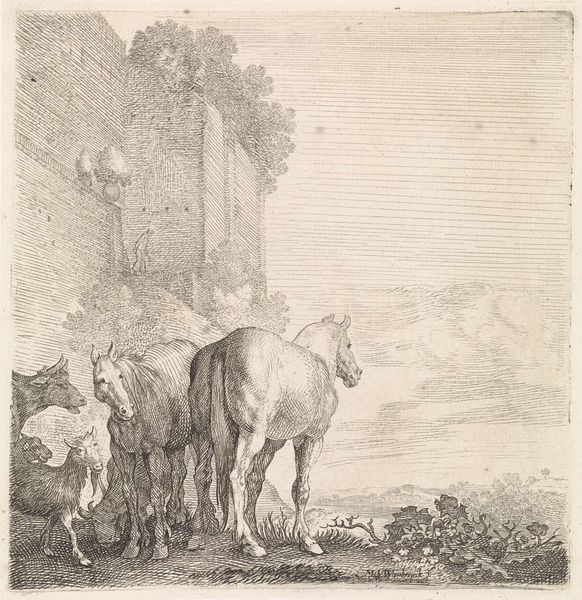
drawing, pencil
#
drawing
#
baroque
#
pencil sketch
#
landscape
#
etching
#
pencil
#
genre-painting
Dimensions: height 210 mm, width 264 mm
Copyright: Rijks Museum: Open Domain
Curator: Jan van Gool's "Pigs and Donkeys Under Trees," dating roughly from 1695 to 1763. It's a drawing rendered in pencil, an interesting intersection of what we might call 'high' and 'low' subject matter. Editor: There’s a striking stillness in the composition; a quiet, pastoral feeling that is somewhat unusual given that one expects to see farm animals at work rather than at rest. Curator: The choice of pencil for a finished work invites us to consider van Gool’s artistic labor, wouldn’t you agree? How often do we think about the availability of materials and artist’s guilds within the scope of 18th-century production, rather than fixating on singular genius? What sort of artisanal economies were these drawings fostering? Editor: I am thinking more of the representation of class dynamics, though. Animals, in this case, take center stage, occupying the artistic space usually reserved for humans of a higher social standing. The depiction, therefore, subtly democratizes art, giving space and perhaps dignity to those often marginalized. Curator: Interesting... But considering van Gool’s status and social networks, is the "democratization" not simply a style choice informed by broader market forces that governed art-making at that time? Did the consumers understand that the material or the labor involved somehow challenged their perceptions of genre painting? Editor: Perhaps... Or maybe it's a veiled critique of aristocratic decadence? These serene, loafing animals inadvertently contrast with human ambition and its propensity for violence or war. A not-so-subtle hint at whose existence leaves the lighter footprint. Curator: Still, thinking about it primarily as a work executed in pencil provides critical access into artistic practices during the period, and this speaks to the wider economies of art creation at the time. To not appreciate this process, to just see the end product, does not give justice to the material reality of being an artist at that time. Editor: We come to this work from such different angles... Curator: As always! Editor: Indeed. Each offering, nonetheless, allows a unique interpretation of van Gool's captivating scene.
Comments
No comments
Be the first to comment and join the conversation on the ultimate creative platform.
